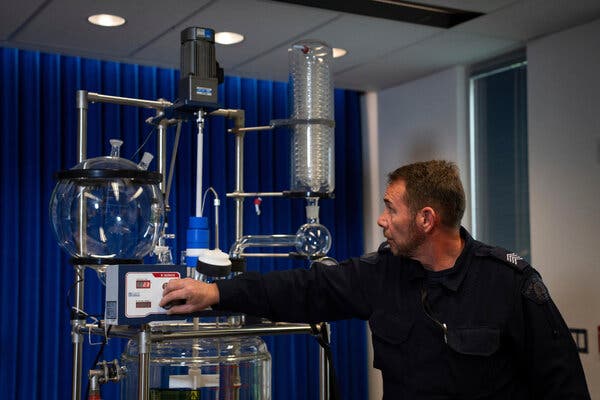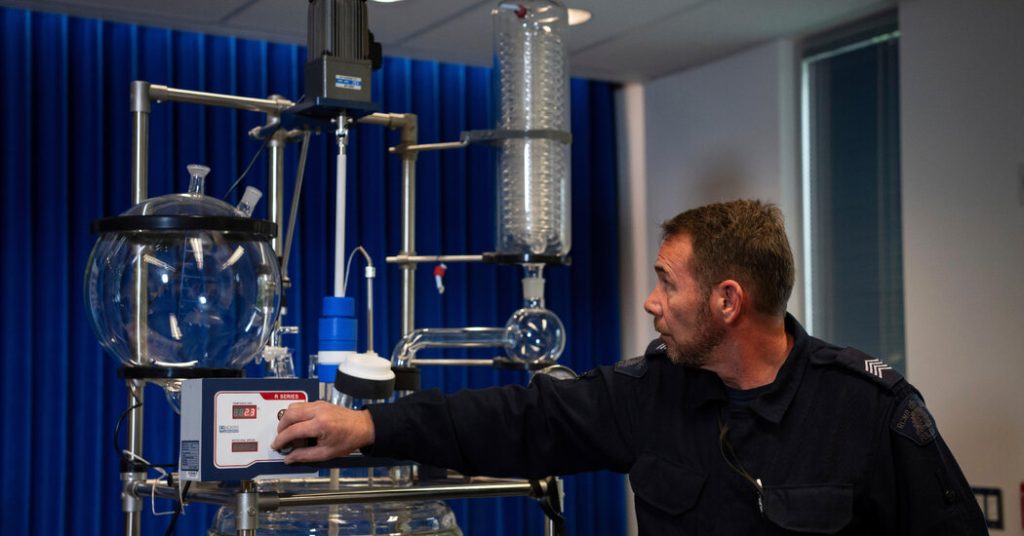The conversation we’re having about opioids in Canada is starkly different from one year ago.

A member of the Royal Canadian Mounted Police demonstrated equipment used to make fentanyl after labs were dismantled in British Columbia.Credit…Ethan Cairns/The Canadian Press, via Associated Press
Where Canadians were once squarely focused on health policies to reduce the high number of opioid deaths — especially last spring, amid British Columbia’s drug decriminalization rollback — our attention has lately shifted, from the people who use drugs to those who sell them.
That’s in large part because of President Trump.
Mr. Trump has said that Canadian criminals send “massive” amounts of illegal fentanyl into the United States, one of the pretexts for his earlier punitive tariff measures.
[Read: Trump Calls Canada a Big Player in the Fentanyl Trade. Is It?]
Less than 1 percent of the fentanyl intercepted by U.S. Customs and Border Protection last year was linked to Canada. Still, Canada made concessions, appointing a “fentanyl czar” and investing in drones and helicopters at the border. As I previously reported, the government agreed to pour millions of dollars into new intelligence-gathering projects and staffing increases at the Canada Border Services Agency.
I worked at the agency’s Toronto regional offices as a university student about a decade ago, sometimes assisting with tours for broadcast media crews at a major postal facility where border officers would demonstrate how they screen packages for illicit fentanyl. At the time, the agency was undergoing one of its many border modernization efforts, reimagining the border not as something that starts at Canada’s geographic extremities, but as a bubble that extends beyond. The concept of pushing out the border simply meant identifying and intercepting security threats long before they had the chance to land at our doorsteps.
Or, as then was the case for fentanyl, in Canadian mailboxes.
Small amounts of fentanyl, a powerful synthetic opioid, can yield huge profits for criminal organizations. For context, 500 grams of fentanyl, which is the weight of about four bananas, has a street value of at least 30,000 Canadian dollars, the police say.







